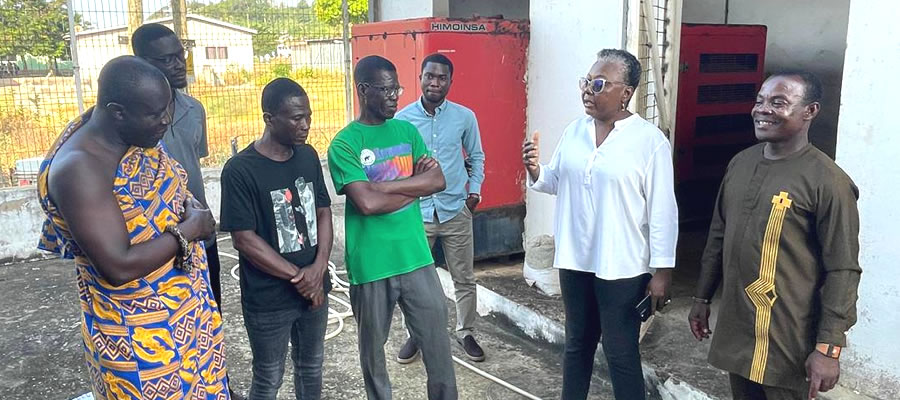

DEMOGRAPHIC CHARACTERISTICS
Population Size and Distribution
Population distribution by age, sex and sex ratio Mfantseman Municipality has a projected population of 175,584 in 2019. This represents 6.6 percent of the regional population. Out of the projected population, 96,571 (53.6%) are females with 79,013 (46.3%) being males. The age groups of 04 years and 15-19 years have the highest population of 13.9 percent and14.0 percent respectively. Generally, population decreases with age for both sexes in the municipality, except for the last five higher age groups from 65 years and older where the population for age 65-69 is slightly lower (1.6%) than that for age 70-74 (1.7%), and the three age groups from 75 years for which the population stays same (1.1%).
Population distribution by age, sex and sex ratio Mfantseman Municipality has a projected population of 175,584 in 2019. This represents 6.6 percent of the regional population. Out of the projected population, 96,571 (53.6%) are females with 79,013 (46.3%) being males. The age groups of 04 years and 15-19 years have the highest population of 13.9 percent and14.0 percent respectively. Generally, population decreases with age for both sexes in the municipality, except for the last five higher age groups from 65 years and older where the population for age 65-69 is slightly lower (1.6%) than that for age 70-74 (1.7%), and the three age groups from 75 years for which the population stays same (1.1%).
On the average, there are more females than males in the municipality. From the Table, the sex ratio for the municipality is 81.8 signifying that there are 82 males to every 100 females. There are more males than females among the 0-4 and10-14 age groups with sex ratios of 102 and 100.5 respectively. The last two age groups from 80 years and above have the least sex ratios of less than 40. The explanation is that as age rises, mortality among males increases.
Dependency ratio
Age-dependency ratio is the ratio of dependents (people younger than 15 or older than 64 years) to the working age population (ages 15-64) measured per 100 persons. The age-dependency ratio for Mfantseman is 81. This implies that every 100 working persons aged 15-64 years support about 81 dependents (children and the aged). It is also evident from the table that child dependency ratio (70.7) is far higher than old age dependency ratio (10.3). Furthermore, there is a higher dependency ratio in the rural (82.1) than urban (80.3) localities, though the difference is not much.


Age-dependency ratio is the ratio of dependents (people younger than 15 or older than 64 years) to the working age population (ages 15-64) measured per 100 persons. The age-dependency ratio for Mfantseman is 81. This implies that every 100 working persons aged 15-64 years support about 81 dependents (children and the aged). It is also evident from the table that child dependency ratio (70.7) is far higher than old age dependency ratio (10.3). Furthermore, there is a higher dependency ratio in the rural (82.1) than urban (80.3) localities, though the difference is not much.
Date Created : 4/2/2025 7:54:26 AM











 facebook
facebook
 twitter
twitter
 Youtube
Youtube
 +233 593 831 280
+233 593 831 280 0800 430 430
0800 430 430 GPS: GE-231-4383
GPS: GE-231-4383 info@ghanadistricts.com
info@ghanadistricts.com Box GP1044, Accra, Ghana
Box GP1044, Accra, Ghana